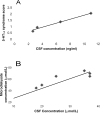Drug metabolism and pharmacokinetics, the blood-brain barrier, and central nervous system drug discovery
- PMID: 16489365
- PMCID: PMC1201315
- DOI: 10.1602/neurorx.2.4.554
Drug metabolism and pharmacokinetics, the blood-brain barrier, and central nervous system drug discovery
Abstract
The worldwide market for therapies for CNS disorders is worth more than 50 billion dollars and is set to grow substantially in the years ahead. This is because: 1) the incidence of many CNS disorders (e.g., Alzheimer's disease, stroke, and Parkinson's disease) increase exponentially after age 65 and 2) the number of people in the world over 65 is about to increase sharply because of a marked rise in fertility after World War II. However, CNS research and development are associated with significant challenges: it takes longer to get a CNS drug to market (12-16 years) compared with a non-CNS drug (10-12 years) and there is a higher attrition rate for CNS drug candidates than for non-CNS drug candidates. This is attributable to a variety of factors, including the complexity of the brain, the liability of CNS drugs to cause CNS side effects, and the requirement of CNS drugs to cross the blood-brain barrier (BBB). This review focuses on BBB penetration, along with pharmacokinetics and drug metabolism, in the process of the discovery and development of safe and effective medicines for CNS disorders.
Figures






References
-
- Palmer AM, DeKosky ST. Neurochemistry of ageing. In: Principles and practice of geriatric medicine (Pathy MSJ, ed), Ed 4, pp 65–76. London, UK: Wiley Ltd., 1998.
-
- Is the pharma industry weathering the ‘perfect storm’? IMS Health, 17 March 2003.
-
- Philips SP, Mackintosh A. Beyond 2005. the future of pharmaceutical marketing and sale. Perspective on life sciences. Special edition. Chichester, Sussex, UK: Ernst & Young, 2002.
-
- Sneader W. Drug discovery—a history. Chichester, Sussex, UK: Wiley, 2005.
-
- Snyder SH. Drugs and the brain. New York: Palmgrave Publishers-The Scientific American Library, 1996.
Publication types
MeSH terms
Substances
LinkOut - more resources
Full Text Sources
Other Literature Sources

